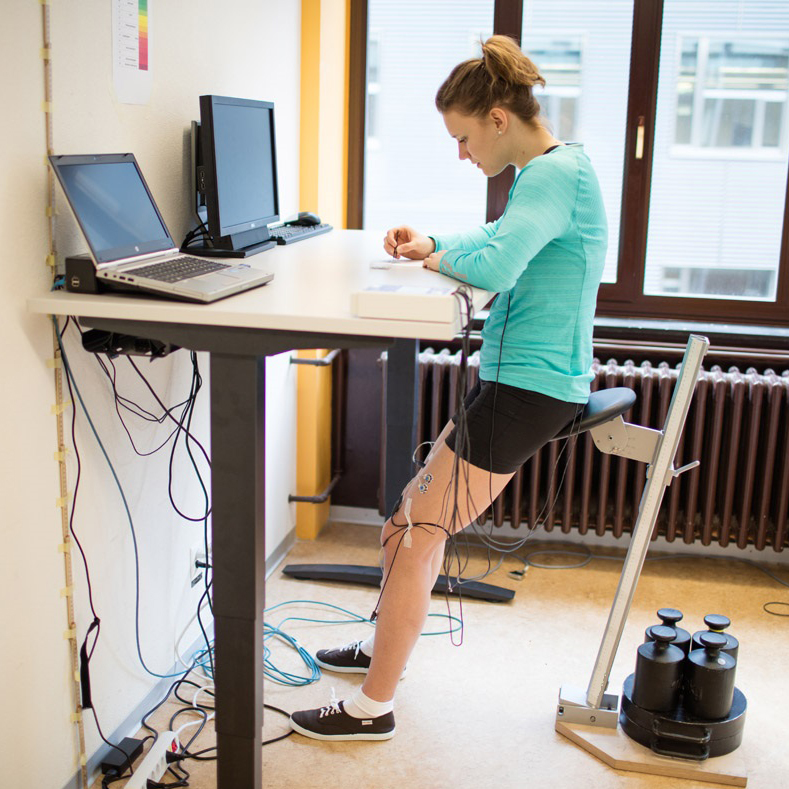Standing Aids for Sit-Stand Workplaces
Day-long sitting has been linked with several health risks and an increased mortality by several studies. A possible solution to reduce sitting time as well as to alleviate the strain of standing could be a standing aid. The aim of this study is to compare leg and lower back muscle activity, heart rate, work performance and subjects’ discomfort while working with a standing aid, standing, and sitting and to get first hints for the development of a new standing aid system.
A possible solution to alleviate the strain of standing as well as to reduce sitting time could be a standing aid. The aim of this project is to compare leg and lower back muscle activity, heart rate, work performance and subjects’ discomfort while working with a standing aid, standing, and sitting and to get first hints for the development of a new standing aid system.
Our subjects were asked to perform computer work, a work task using fine motor skills and a work task using gross motor skills in different positions using standing aids, standing or sitting . During the work tasks, the activity of the m. gastrocnemius, m. vastus lateralis and m. erector spinae was measured using surface electromyography (EMG). Furthermore, the heart rate, the performance and the discomfort of the positions were assessed.
Funding
Kommission für Technologie und Innovation (KTI-Projekt Nr. 18053.1 PFES-ES „Entwicklung einer ergonomisch optimierten, neuen Stehhilfe“)

